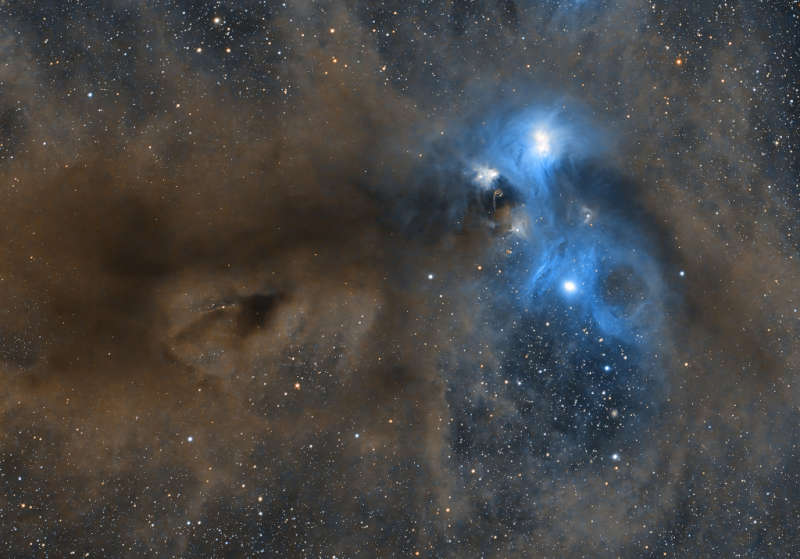 |
Астронет: Астрономическая картинка дня Звезды и пыль в Южной Короне http://variable-stars.ru/db/msg/1903299/eng |
Credit & Copyright: Alessandro
Cipolat Bares
Explanation:
Cosmic dust clouds cross a rich field of stars in
this telescopic vista near the northern boundary of
Corona Australis,
the Southern Crown.
Part of a sprawling molecular cloud complex this star forming
region is a mere 500 light-years away.
That's about one third the distance of
the more famous stellar nursery known as the Orion Nebula.
The 2 degree wide frame would span 15 light-years at
the clouds' estimated distance.
Mixed
with bright nebulosities
the dust clouds
effectively block light from
more distant background stars in the
Milky Way
and obscure from view embedded stars
still in the process
of formation.
Large dark nebula Bernes 157 is on the left.
To its right are
a group of
pretty reflection nebulae cataloged as NGC 6726, 6727, 6729, and IC 4812.
Their characteristic blue color is produced as light
from hot stars is reflected by the cosmic dust.
The more compact NGC 6729 surrounds young variable star
R Coronae Australis.
Just below it, filamentary arcs and loops are identified as
Herbig Haro objects associated
with energetic newborn stars.
In fact, at the heart of this area lies the
Coronet Cluster,
one of the nearest and most active
star forming
regions.
Authors & editors:
Robert Nemiroff
(MTU) &
Jerry Bonnell
(USRA)
NASA Web Site Statements, Warnings,
and Disclaimers
NASA Official: Jay Norris.
Specific
rights apply.
A service of:
LHEA at
NASA /
GSFC
& Michigan Tech. U.
